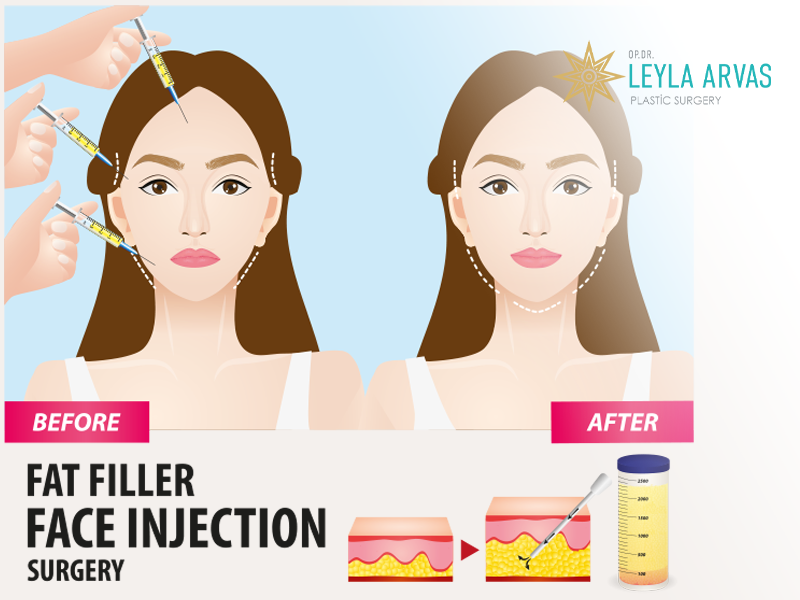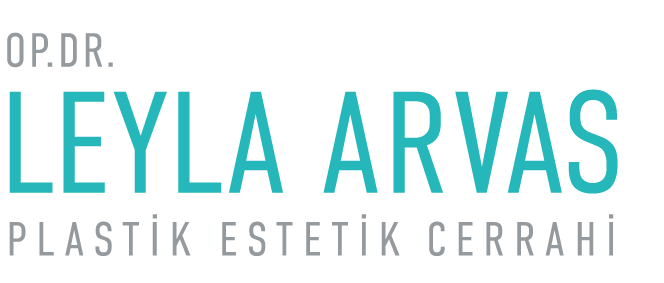Fat Transfer To Face ; Some of the most obvious indications of aging include deep wrinkles, crow’s feet, and a loss of volume. You can pick facial Lipo-Filling, a revolutionary process that only requires 15 minutes of your time, to lessen the visibility of these indications! In the realm of cosmetic and plastic surgery, the advanced techniques of lipo-filling, also known as fat grafting, are receiving increasing attention. As it involves injecting fat from one area of your body to the face, this surgery has the special benefit of restoring the aesthetic harmony of your body while utilizing your own body fat. To get the most natural outcomes, the aim behind this is to restore what was there organically. Want to give it a try and observe the effects for yourself? For more information or to make an appointment, get in touch with us.
Lipo-filling can be used for body treatments including breast augmentation and hand fat grafting in addition to face surgeries.
What’s Fat Transfer To Face?
The struggle against aging will last the rest of your life, and the face is perhaps the toughest place to combat it. As you age, you lose crucial structural proteins and subcutaneous fat that used to keep your skin smooth and your facial features full and healthy. Your skin may become more prone to fine lines, hollow spots around the eyes, sagging skin, and wrinkles as a result.
Fortunately, you have a few solutions at your disposal to regain your vibrant youth. The act of injecting fat into particular places to generate fullness is known as fat injection, and it is a natural and efficient method of skin rejuvenation in the face area.
The face is taken into account as a whole while treating age indications in the facial area, and treatments are carried out accordingly. The face can be treated as a whole when using oil injections, with oil being injected into the cheeks, forehead, cheek-lip line, chin tip, lips, and other areas deemed required.
When Can You Get Fat Transfer To Face?
Even if we moisturize our skin regularly and properly, shield it from the sun, or take other protective measures, time nevertheless manifests the signs of aging. When the signs of aging are visibly present in the facial area, fat injection looks to be the first step in the operations that can be done.
The following are a few scenarios that make the fat injection technique optimal and successful:
- Observation of prominent facial wrinkles
- Depressions beneath the eyes and on the cheeks
When aging-related creases on the face are too deep and skin develops permanent scars and folds, the effects of fat injection operations may be less noticeable. Applications that are carried out as subcutaneous support in face injection operations are crucial in this approach.

Process Of Fat Transfer To Face
Usually, general anesthesia or sedation is used to apply the oil to the facial region, while in other circumstances, just local anesthetic is used.
First of all, the fat removed from certain body areas is put through several processes before being injected into the facial area. These procedures include washing and centrifuging.
The oils are transferred to an appropriate injector after the washing and centrifugation operations, and then are injected into the areas identified by the results of the preliminary assessments.
It is important to transfer the taken fats to the appropriate region without coming into touch with air if you want the fat cells placed in the targeted places to produce outcomes that are both permanent and efficient. The less tissue loss that may occur and the less contact the oils have with the air, the longer the oils will stay in place.
The likelihood that fat cells will survive varies according to the surgical material used during the injection procedure, the method utilized to remove the fat from the target location and carry out the transfer procedure, and the kind of operations carried out on the fats and their transfer. In this regard, we can assert that a direct correlation exists between the permanence of the procedure and the manner in which the fat injection method is administered to the face region.
Since no incisions are made, fat injection treatments to the facial area are safe, effective, and leave no aftereffects.
Where To Get Fat To Transfer Face?
The abdomen, inner thighs, and buttocks are where the fat for fat injection is collected from. With the application of fat injection, fat may be taken out of the hip or waist areas using specialized liposuction injectors. For fat injection, oils extracted from the eye bags of a patient with eyelid aesthetics as well as fats collected from the arms and legs of liposuction patients can be employed.
What Does Fat Transfer Do To Your Face?
The face is the region where fat injections occur most frequently. Fat injections are given to the face to thicken the lips, fill in deep creases as much as possible, and accentuate the cheekbones. The following is a list of the outcomes of fat injection in the facial area:
The body absorbs some of the fat injected into the facial region, restoring some of the volume that has been lost as we age.Collagen formation in the body is increased by fat injection.
The fat cells that are injected into the skin work as a type of stem cell, regenerating and revitalizing the skin. 40% of the oils delivered through injection typically last for six months.
Facial edema and bruising in the region where the fat was removed may develop after the surgery. The results of the fat injection method last for about a week or ten days on average, after which the edema soon goes away and fullness starts to show.
How Long Does Fat Transfer To Face Take?
Fat will be moved from the body to the face throughout the surgery. To do this, fat will first be removed from a bodily area where there is a purported surplus. This is then filtered and returned to the intended destination. This is carried out directly beneath the skin to provide contour, volume, and long-lasting skin enhancement. Under local anaesthetic, the treatment lasts for around 15 minutes.
Getting Fat Transfer To Face: What To Expect?
The treatment itself and how it will benefit you in the long run are the two most crucial things to learn before having surgery. Dr. Leyla Arvas initially utilizes liposuction to remove fat from a secondary area of the body before beginning a face fat transfer. Patients typically want to have fat removed from their thighs, back, or tummy because this method also shapes and slims frequent problem areas.
The parts of your face where you want to change the contours of your face, add more volume, and tighten your skin are subsequently treated with injections of the extracted fat. The cells that make it through the transfer become permanent in their new site once your recuperation is complete.
Benefits Of Getting Fat Transfer To Face
Lipofillers are another way to restore face volume, and they might be a useful option for younger individuals who only need little treatment. Fillers can seem artificial if used excessively, and the more fillers are utilized, the more probable it is that they will have negative consequences.
A fat injection is an autograft, which means that it uses your own cells to restore lost volume. As a consequence, you may inject as much as you need without worrying about adverse reactions or rejection and always getting results that seem natural and last a long time.
Fat injections can be administered under local anesthesia, just like fillers, and often take less than 30 minutes to complete. It normally takes 45 minutes to complete this procedure, and most patients opt for mild sedation.
Fat Transfer To Face Has Less Risks Compared To Other Procedures
Because of the massive collagen loss, the lowest portion of your face will have the most severe drooping skin. When treating minor drooping skin, a face fat transfer can be utilized to prevent surgery by replenishing vital skin volume.
Even though face fat grafting is a surgery, it’s a really simple procedure. A face fat transplant may be the best and least invasive solution in some circumstances. The donor and transfer locations will only have very little incisions. The fat transfer is less invasive than many other face cosmetic treatments because both the equipment used to collect fat cells and the needle used to re-inject them are tiny. Additionally, it will take you less time to recuperate in a painful manner, allowing you to resume your normal activities more quickly.
Fat Transfer To Face Aftercare
The discomfort that follows anesthesia passes within a few hours for the patient. Within a few days following the surgery, swelling and skin thickening might happen. Bruises can also happen. Swelling can lead to asymmetry, but it will pass after some time.
After the surgery, needle puncture holes are left on the skin, however they are not visible. Within the first several days following the treatment, the majority of patients may resume their normal routine. A patient should see a doctor to review the procedure’s outcomes once the swelling has subsided. We advise not engaging in any physical activities for the first two weeks following the surgery.
Fat Transfer To Face Prices In Turkey
The price of a face fat transfer is affected by a number of factors, but the area(s) to which the fat is transferred has the most impact. Because the outcomes are permanent, fat transfer expenses are often cheaper than those associated with other operations. With fat transfers, you don’t need to have several procedures to maintain up, which lowers the price.
You should have an examination by our doctor in order to learn more specifically about fat transfer and to learn which procedure is best for you. At the conclusion of the test, you may learn your fat transfer pricing information in the most precise manner.
It is illegal for facilities that have received Ministry of Health accreditation to list pricing on their website. Therefore, if you would like to get in touch with us and learn more about the process, please phone 0212 241 46 24.
